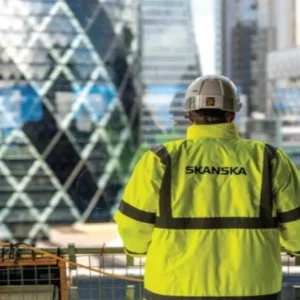
Coronavirus has had a significant impact on investments, mergers and acquisitions. According to Which?, markets will be extremely volatile as investors weigh the effect of coronavirus against measures aimed at easing its economic impact.
“Rising unemployment and the prospect of a new social environment could materially alter the way the economy runs moving forward, which investors need to have in the back of their minds,” Joe Healey, the Share Centre’s investment research analyst, told the consumer group. 1,118 deals were announced globally during the week ending 28 June 2020 – a decrease of 8% over the 1,215 deals announced during the previous week, according to GlobalData’s deals database.
“Global deal activity has remained inconsistent due to volatile market conditions since the Covid-19 outbreak and this decline comes after the 7% growth witnessed during the week ending 21 June,” Aurojyoti Bose, lead analyst at GlobalData, explains. “While the number of deals announced during the week was more than the weekly average levels of April and May 2020, it is still lower than the Q1 2020 weekly average levels.”
Deal activity has also remained inconsistent across geographies since the outbreak. Deal volume declined in markets such as the US (by 11.2%), China (48.9%), South Korea (35%), India (24.4%), Germany (7.1%) and France (17.9%) during the week ending 28 June 2020 compared with the previous week. Meanwhile, the UK and Australia witnessed growth in the number of announced deals by 29.8% and 20.3%, respectively.
Deal activity in sectors such as travel and tourism, and healthcare (including pharmaceuticals and medical equipment), declined during the week ending 28 June 2020 compared with the previous week, while the retail sector witnessed some improvement. Deal types such as mergers and acquisitions (M&As), private equity, venture financing, partnerships and debt offerings witnessed decline in deal volume by 5.6%, 14.5%, 14.1%, 16.2% and 12.6%, respectively, during the week ending 28 June 2020 compared with the previous week, while the number of equity offering deals increased by 3.9%. The number of deals announced in the global retail sector declined by 11.8% during the week ending 14 June 2020, compared with the previous week.
“The retail sector is among the worst hit due to Covid-19 and has been witnessing inconsistent deal activity since the outbreak,” says Bose. “The decline this week is after the growth witnessed during the previous week.” GlobalData has cut its construction output forecast for Western Europe to -8.1% in 2020, reflecting the sharp declines in activity across the region in spring, during which construction work ground to a halt in numerous markets.
“There is a divide in the region between those most severely impacted by the crisis, namely Spain, France, Italy and the UK, and those that will suffer a relatively mild contraction in 2020, such as Sweden, Germany and Austria,” Moustafa Ali, an economist at GlobalData, notes. “While reflecting in part the relative successes that countries have had in avoiding a major outbreak of Covid-19, the range of outcomes for construction growth in 2020 is primarily a factor of the extent to which the industry was shut down during the peak of the crisis between March and May.”
Response and recovery
Governments across the region originally responded to the virus outbreak by imposing strict lockdown measures, which resulted in the closure of construction sites. However, with the spread of the virus slowing and the lifting of containment measures, several countries have reopened large parts of their economy, and construction work is getting back on track. Therefore, the general outlook for the sector across the continent is more positive in the second half of the year, as construction restarts and economic activity picks up across the region.
While investment in building work looks increasingly risky, one promising area of interest is 5G, with businesses looking to power up the speed of their communications. The intrinsic capacity of the fifth-generation cellular technology (5G) to connect the internet’s end systems with enhanced data flows and faster response times will unlock the full potential of emerging technologies, according to GlobalData.
“In addition to the striking speed, which enables data transmission between two end systems almost instantly, 5G’s ability to connect thousands of such devices at once with lower latency, higher reliability and lesser battery consumption lays a strong foundation for the effective adoption of emerging technologies,” says Archi Dasgupta, director of disruptive tech at the data and analytics company.
An analysis of GlobalData’s disruptor tech database reveals how 5G can influence the deployment of emerging technologies, notably internet of things (IoT), autonomous vehicles, robotics and drones, and virtual reality (VR).
The IoT crowd
5G can find its major use case in helping IoT applications to overcome the limitations of 4G in industries such as mining, where lower latency and reliability are critical for daily operations and safety.
Swedish miner Boliden collaborated with Ericsson to deploy 5G at its Aitik mine fitted with hundreds of sensors for industrial automation. Boliden expects to uncover a potential business value of over €2.5m ($2.7m) in net savings annually with the use of 5G networks.
8%
Global deal decrease for the week ending 28 June 2020 compared with the previous week.
GlobalData
“The retail sector is among the worst hit due to Covid-19 and has been witnessing inconsistent deal activity since the outbreak.”
Aurojyoti Bose, GlobalData
Autonomous vehicles, robotics and drones
The cellular vehicle-to-everything (C-V2X) communication project by 5G Automotive Association (5GAA) consortium, which has Audi and BMW as members, is looking to 5G to extend communication range and enable faster data transmission between numerous sensors in the driving environment and centralised servers to coordinate autonomous driving safely and efficiently. 5G can fill the gaps in 4G with virtually instantaneous response times essential for robots to process more data in real time, absorb new information and better communicate with the real world. While a 5G robot by KT Corp is already active in South Korea for coffee making, the technology is expected to be the key enabler of next-generation robotic applications such as telesurgery.
5G’s elevated bandwidth will enable drones to shoot live 4K or 360º videos through their cameras and revolutionise the way people watch videos.
Virtual reality
Elsewhere, the widespread adoption of VR depends on reliable 5G networks as the immersive technology consumes huge data. VR head-mounted displays currently require a powerful PC to run and store, which means the experiences are confined to a location and require high power. The edge cloud capabilities of 5G look to have a solution for all these problems.
“While the commercial adoption of 5G for broader industrial applications is expected to take off in the early 2020s, its mainstream adoption could take longer due to several hurdles – the most crucial being cost,” Dasgupta explains. “As the technology uses a totally different wavelength and needs much higher bandwidth compared with 4G and 3G, it requires network operators to replace the entire existing infrastructure. However, 5G adoptions will increase gradually and complement the effective implementation of emerging technologies.” The virtual reality (VR) and augmented reality (AR) market – collectively known as extended reality (XR) – has been on the cusp of becoming the next mainstream platform, but it has remained niche for many years thanks to technological limitations and scant content. However, the Covid-19 global pandemic appears to have changed the technology’s fortunes – at least in the short term – as homebound people search for ways to entertain themselves and connect with others, according to GlobalData.
-8.1%
Updated construction output forecast for Western Europe in 2020.
GlobalData
“Major events such as concerts, sporting competitions and conferences will likely move ahead this year without live fans in attendance, giving XR the opportunity to shine.”
Lynnette Luna, GlobalData
“Whether the adoption trend of XR will hold up as most of the world becomes free to move about again remains to be seen,” Lynnette Luna, principal analyst at GlobalData, comments. “But major events such as concerts, sporting competitions and conferences will likely move ahead this year without live fans in attendance, giving XR the opportunity to shine. However, hardware and a complete XR ecosystem are still evolving.”
Facebook, which has a vision of making XR the next communications platform, said it attracted nearly $300m in non-advertising revenue during Q1 2020, with the number being largely driven by sales of Oculus VR products. The Oculus Quest is Facebook’s full-featured, reasonably priced consumer VR headset, while the Oculus Rift S is a dedicated PC headset. Both products are facing shortages as stay-at- home orders and social distancing have disrupted production and the supply chain. During Facebook’s conference call discussing quarterly earnings in April, CEO Mark Zuckerberg noted that it’s possible the pandemic could kick off an acceleration for XR adoption. “Regardless of the higher interest in early stand-alone VR headsets like the Oculus Quest, consumer adoption of solutions remains unknown,” Luna continues. “The industry wants to reach a market that consists of stand-alone lightweight XR glasses with a plethora of experiences and applications. That is as long as ten years away. If anything, the Covid-19 pandemic should demonstrate what XR can do.”
During the next decade, XR is expected to take off in both the enterprise and consumer markets, enabling users to work and experience entertainment in a hybrid digital/real-world space. But form factors have not evolved yet to make this a reality. Prior generations of headsets have been tethered to computers or relied on smartphones as displays. Now, stand-alone viewers, such as Facebook’s Oculus, are popular devices – especially during the pandemic – and are connected to Wi-Fi. Early 5G XR viewers will be tethered to smartphones until hardware makers develop lightweight stand-alone 5G XR glasses.
“With new high-speed, low-latency 5G networks coming to market, mobile operators are hoping AR/VR becomes a key application that sets their networks apart from today’s generation of wireless technology. But these are still the early days,” Luna explains.
A strong cyberdefence
While 5G increases the speed of our communications, many companies have expressed concerns over cybersecurity, as attacks increase and staff move out of the office to working from home.
“Cybersecurity is an unrelenting battle,” David Bicknell, principal analyst, thematic research at GlobalData, comments. “Companies manage an array of assets, including infrastructure, applications, managed and unmanaged end points, mobile devices, and cloud services, all of which can be attacked.
The types of attacks include phishing, the most popular, and ransomware, which is becoming the most lucrative.
“The ongoing Covid-19 pandemic has highlighted why cyber-naive remote workers have needed security awareness training to thwart hacker attacks. Attackers will target immature technologies, meaning 5G communications, smart cities and the internet of things are all at risk. To counter these threats, organisations are moving towards a zero-trust stance, which assumes that all entities, inside or outside the perimeter, cannot be trusted. Security will also be adopted earlier in application development. It must be baked in, not bolted on.”
“New AI-infused security companies will either be the standard-bearers of the future or, more likely, they’ll become M&A targets for the old guard,” Bicknell concludes. “Those firms that fail to define a clear AI security stance or take the necessary M&A steps to acquire one will lose out.”






